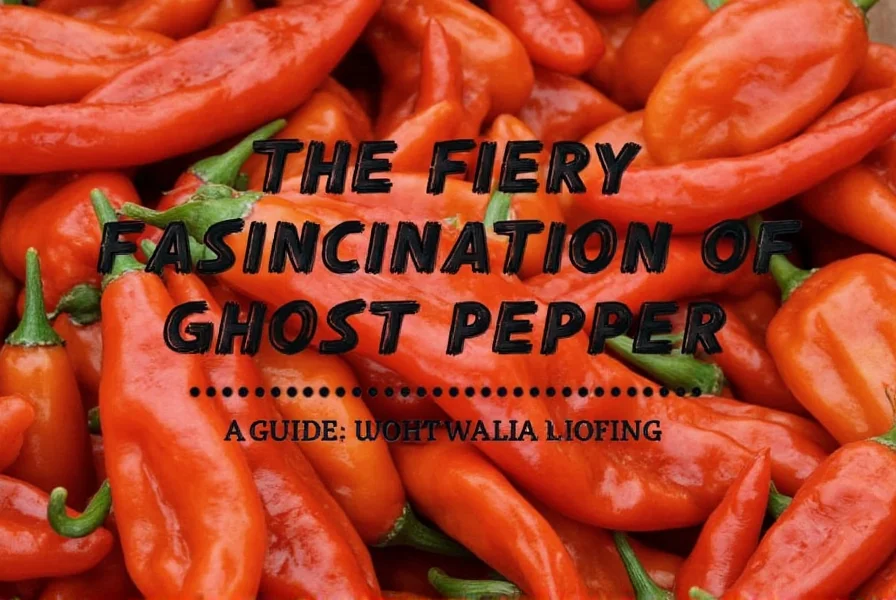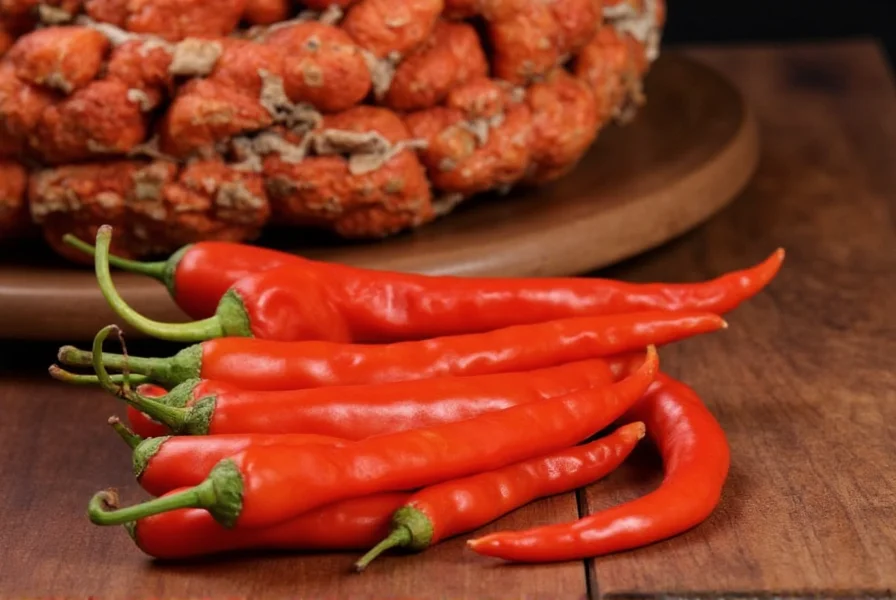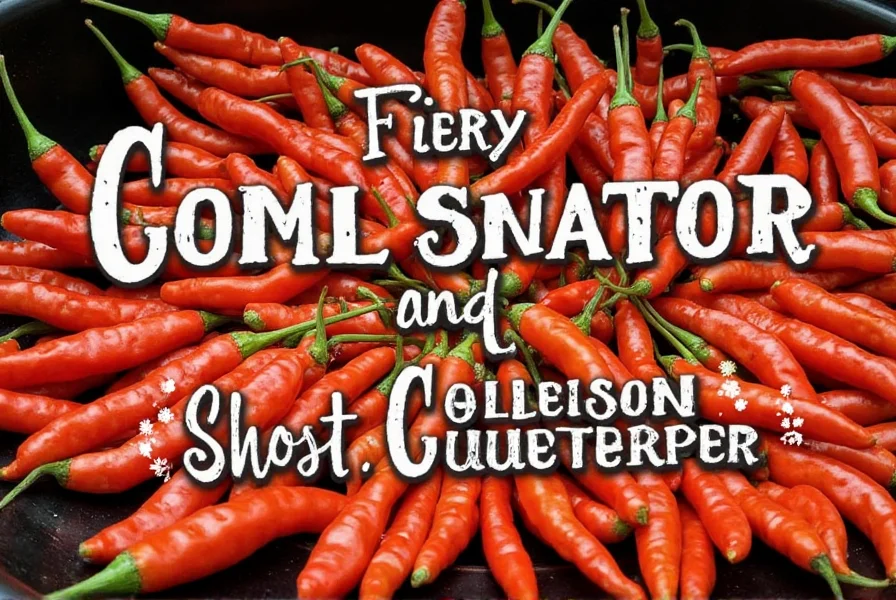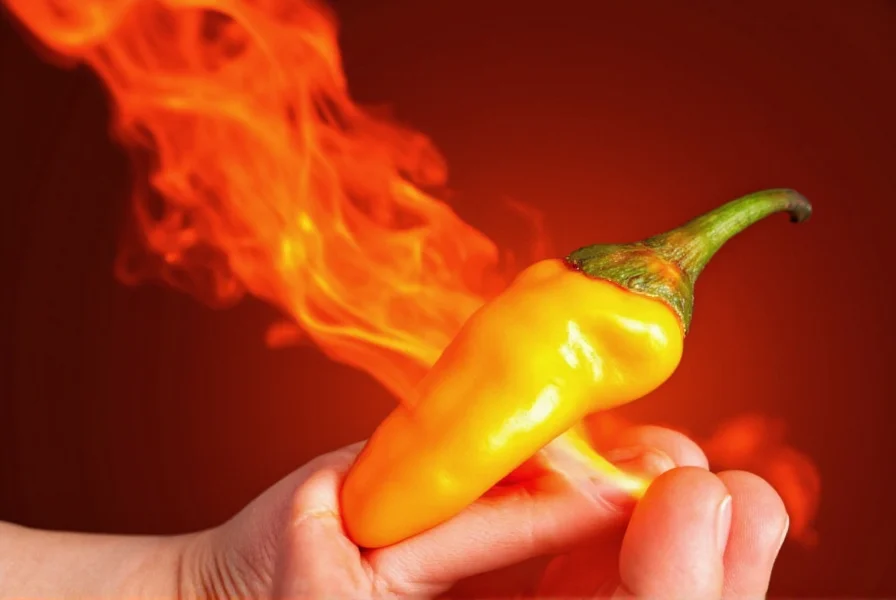Table of Contents
- Introduction to Ghost Chili Pepper
- Safety Precautions When Handling Ghost Chili
- Understanding the Heat Level of Ghost Chili Pepper
- Cooking Tips with Ghost Chili Pepper
- Buying Guide for Ghost Chili Pepper
- Comparing Ghost Chili Pepper with Other Hot Peppers
- Frequently Asked Questions about Ghost Chili Pepper
- Conclusion
Introduction to Ghost Chili Pepper
The ghost chili pepper (bhut jolokia) is one of the world's hottest peppers, with a Scoville rating between 800,000 and 1,000,000+ SHU. This guide provides essential information on its heat level, safe handling, culinary uses, and comparisons with other hot peppers. Whether you're a beginner or experienced cook, learn how to use ghost chili without risking injury.

Safety Precautions When Handling Ghost Chili
Handling ghost chili peppers requires extreme caution due to their intense heat. Here are critical safety steps to follow:
- Always wear gloves: Capsaicin in ghost chilies can cause severe skin irritation that lasts for hours. Use nitrile or rubber gloves, not latex.
- Avoid touching your face: Never touch your eyes, nose, or mouth after handling ghost chilies. Even a tiny amount can cause intense burning.
- Work in a well-ventilated area: The fumes from ghost chilies can be overwhelming. Consider wearing eye protection if handling large quantities.
- Clean surfaces thoroughly: After handling, wash all cutting boards, knives, and surfaces with soap and hot water. Capsaicin can linger for days.
- Never use bare hands: Even experienced cooks should avoid touching ghost chilies with bare skin. If you accidentally touch your skin, wash immediately with soap and water, then apply rubbing alcohol or oil to remove capsaicin.
Remember: The heat from ghost chilies is not just in the pepper itself—the seeds and membranes contain the highest concentration of capsaicin. Always remove these parts carefully when preparing.
Understanding the Heat Level of Ghost Chili Pepper
The Scoville scale measures the concentration of capsaicin in peppers. Ghost chili peppers typically range from 800,000 to over 1,000,000 Scoville Heat Units (SHU), making them approximately 200 times hotter than a jalapeño and 3 times hotter than a habanero.
For context:
- Jalapeño: 2,500-8,000 SHU
- Habanero: 100,000-350,000 SHU
- Ghost chili: 800,000-1,000,000+ SHU
- Carolina Reaper: 1,400,000-2,200,000 SHU (the current world's hottest pepper)
Just one bite of ghost chili can cause intense burning that lasts 30-45 minutes. The heat builds slowly but peaks quickly, making it challenging for inexperienced users.
Cooking Tips with Ghost Chili Pepper
Using ghost chili in cooking requires precision. Here are expert tips:
- Start with micro-doses: For first-time users, use only 1/8 of a pepper. You can always add more, but you can't remove it once added.
- Use in small quantities: A single ghost chili can season an entire pot of stew. For sauces, use 1-2 drops of extract per serving.
- Pair with cooling ingredients: Balance heat with dairy (yogurt, sour cream), fats (coconut milk), or sweet elements (honey, fruit).
- Make controlled condiments: Create ghost chili oil or vinegar infusions for precise heat control. Add 1-2 peppers to 1 cup of oil and let sit for 2 weeks.
- Test before serving: Always taste-test in small batches before serving to others, especially when cooking for guests.
Pro tip: When using ghost chili in recipes, remove the seeds and membranes to reduce heat intensity while retaining flavor.

| Product Type | Features | Advantages | Use Cases | Target Audience | Suitable Occasions |
|---|---|---|---|---|---|
| Fresh Ghost Chili Peppers | Usually bright red or orange, with a firm texture | Provides the most authentic flavor and heat | Cooking, pickling, or making sauces | Home cooks, chefs | Weekend cooking, special meals |
| Dried Ghost Chili Peppers | Dark red, shriveled, and slightly wrinkled | Longer shelf life and concentrated flavor | Using in stews, curries, or grinding into powder | Chefs, spice enthusiasts | Spicy dishes, holiday cooking |
| Ghost Chili Powder | Finely ground, with a deep red color | Easy to use and measure | Seasoning meats, adding to sauces, or mixing into rubs | Home cooks, busy professionals | Quick meals, snacks, or seasoning blends |
| Ghost Chili Extract | Concentrated liquid form | Intense heat without the bulk | Adding to dips, dressings, or beverages | Chefs, cocktail mixologists | Cocktail making, gourmet dishes |
When buying ghost chili peppers, look for products that are fresh, vibrant in color, and have a strong aroma. Avoid any that appear dull, dry, or have an off smell, as these may indicate poor quality or age.
| Pepper | Scoville Rating | Flavor Profile | Common Uses |
|---|---|---|---|
| Ghost Chili Pepper | 800,000–1,000,000+ | Earthy, smoky, with a hint of fruitiness | Curries, salsas, chutneys |
| Habanero | 100,000–350,000 | Smoky, sweet, with a citrusy finish | Salsas, sauces, cocktails |
| Jalapeño | 2,500–8,000 | Mild, grassy, slightly tangy | Stuffed peppers, salsas, guacamole |
| Tabasco | 30,000–50,000 | Pungent, sharp, with a tangy kick | Condiments, dressings, marinades |
| Chipotle | 2,500–8,000 | Smoky, earthy, slightly sweet | Stews, sauces, grilled dishes |
This comparison highlights how the ghost chili pepper stands out in terms of heat and flavor. While it's much hotter than the habanero and jalapeño, its unique combination of earthiness and fruitiness makes it a versatile choice for a variety of dishes.

Frequently Asked Questions about Ghost Chili Pepper
How hot is the ghost chili pepper compared to other common peppers?
The ghost chili pepper (bhut jolokia) rates between 800,000 and 1,000,000+ on the Scoville scale. This makes it approximately 200 times hotter than a jalapeño and about 3 times hotter than a habanero. Only newer superhot varieties like the Carolina Reaper surpass it in heat. Just one bite can cause intense burning that lasts for 30-45 minutes.
What does a ghost chili pepper taste like beyond just being hot?
Beyond its intense heat, the ghost chili has a complex flavor profile that's often described as earthy, smoky, with subtle fruity notes. Many people notice a sweet-fruity flavor in the first few seconds before the intense heat kicks in, which is why it's valued by chefs for adding depth to dishes beyond just heat. This flavor complexity makes it more than just a heat bomb—it's a culinary ingredient with dimension.
What safety precautions should I take when handling ghost chili peppers?
Always wear gloves when handling ghost chili peppers, as the capsaicin can cause severe skin irritation that may last for hours. Avoid touching your face, especially eyes, during preparation. Work in a well-ventilated area as the fumes can be intense—some people even wear eye protection. After handling, wash your hands thoroughly with soap and water, and clean all surfaces and utensils that came in contact with the peppers. Never use bare hands to touch your face after handling these peppers.
How can I reduce the burning sensation if I've eaten too much ghost chili?
Dairy products like milk, yogurt, or ice cream are most effective at neutralizing capsaicin (the compound that causes the burn). The fat in dairy binds with capsaicin better than water, which just spreads it around. Sugar or honey can also help somewhat by counteracting the heat receptors. Avoid alcohol, as it can intensify the burning sensation. For skin contact, rubbing alcohol or oil can help remove capsaicin before washing with soap and water.
Can I grow ghost chili peppers at home, and how difficult is it?
Yes, ghost chili peppers can be grown at home, though they require warm temperatures (70-90°F), plenty of sunlight, and well-draining soil. They typically take 100-120 days to mature from seed. The plants can grow 3-4 feet tall. While not the most difficult chili to grow, they do require more warmth and a longer growing season than many common peppers. Starting seeds indoors 8-10 weeks before the last frost gives the best results. The peppers change from green to bright red when fully ripe and hottest.
What are some traditional uses of ghost chili peppers in cuisine?
Originating from northeastern India, ghost chilies have been used traditionally in Assamese cuisine for centuries. They're often used in chutneys, pickles, and meat dishes. In some regions, they've been used as a natural pest deterrent—locals would mix the peppers with animal dung and smear it around fields to keep elephants away. Their intense heat made them useful for protecting food stores from animals. In modern culinary applications, they're used in hot sauces, infused oils, and even some craft beers and cocktails for adventurous drinkers.
Conclusion
The ghost chili pepper is more than just a spicy ingredient—it's a culinary adventure that challenges and excites. Whether you're a professional chef or an amateur enthusiast, understanding the heat level, flavor profile, and usage of this pepper can open up a world of possibilities in your kitchen. From the initial taste of its fiery bite to the complex layers of flavor, the ghost chili offers a unique experience that's worth exploring.
Remember, the key to enjoying the ghost chili pepper lies in moderation and experimentation. Start small, pair it with complementary ingredients, and don't be afraid to try new recipes. With the right approach, you can harness the power of this legendary pepper and create dishes that truly stand out.
So, are you ready to embrace the heat? The ghost chili pepper awaits—and it's sure to leave a lasting impression.











 浙公网安备
33010002000092号
浙公网安备
33010002000092号 浙B2-20120091-4
浙B2-20120091-4